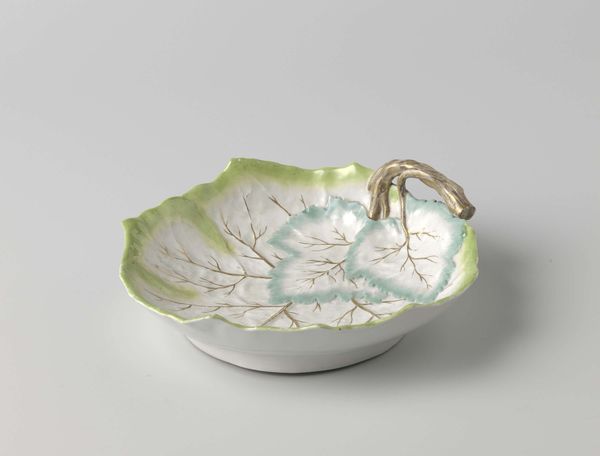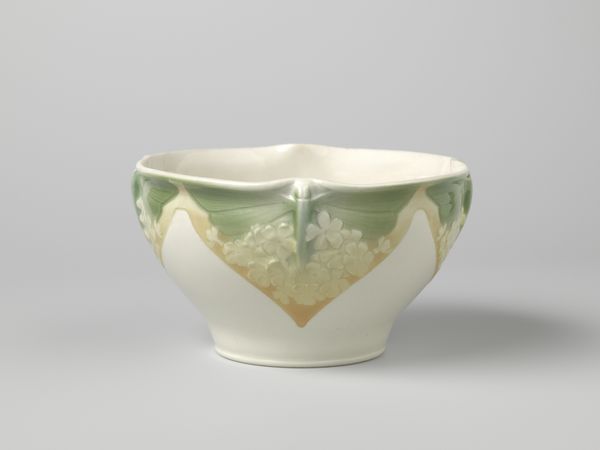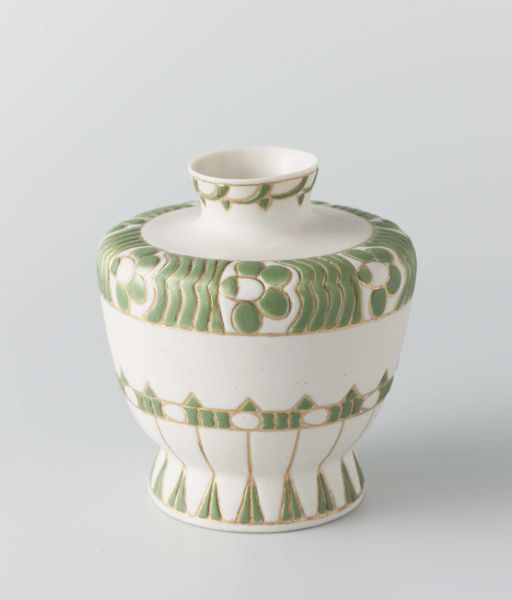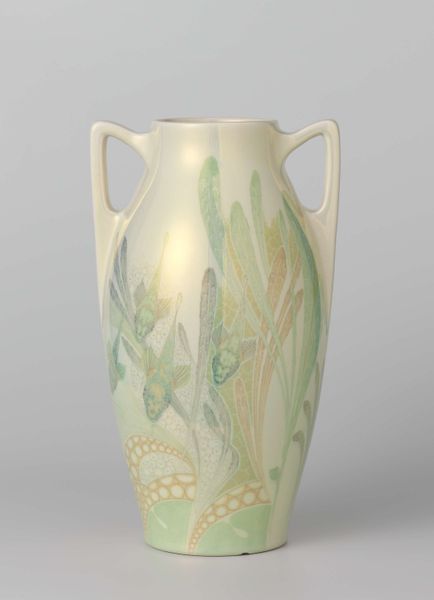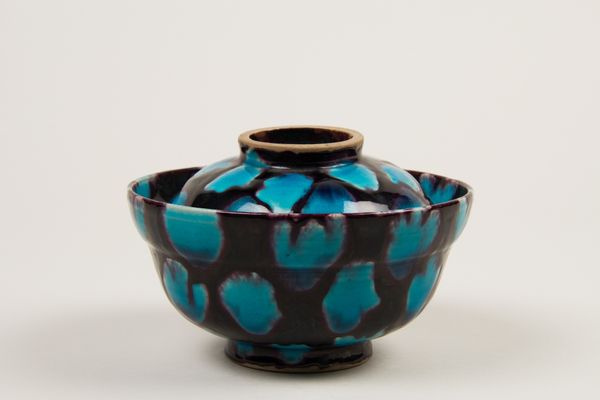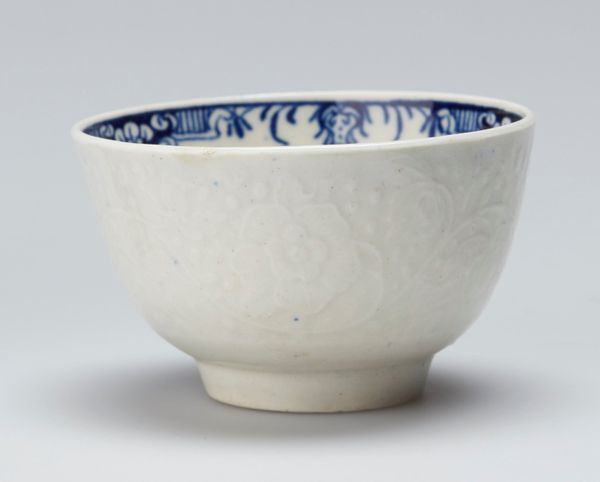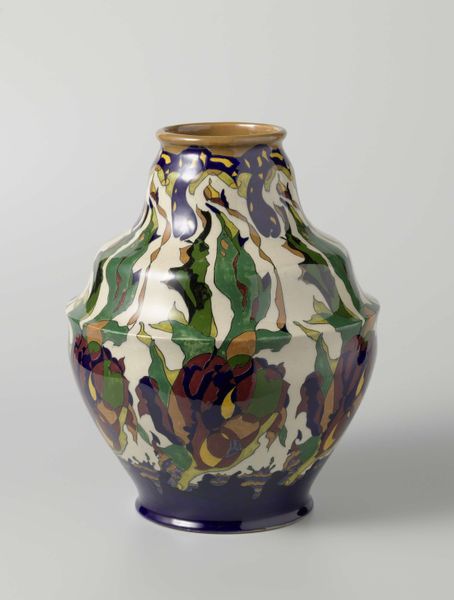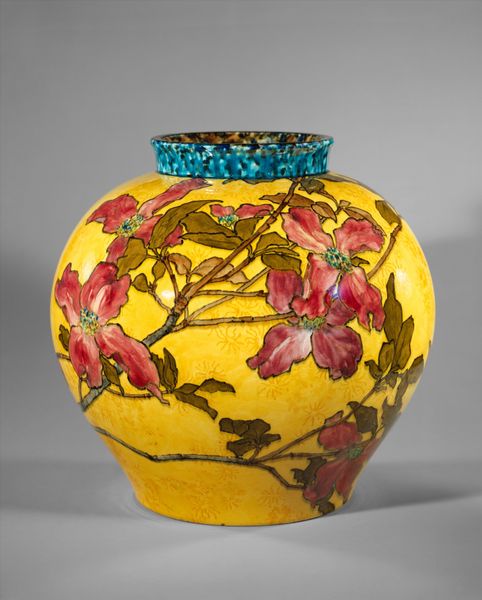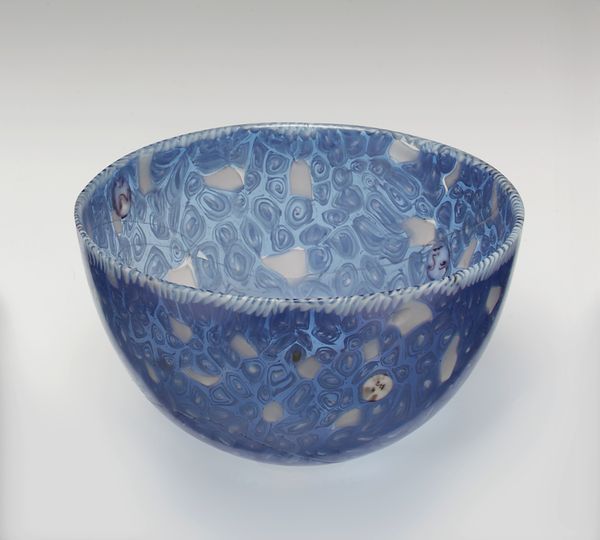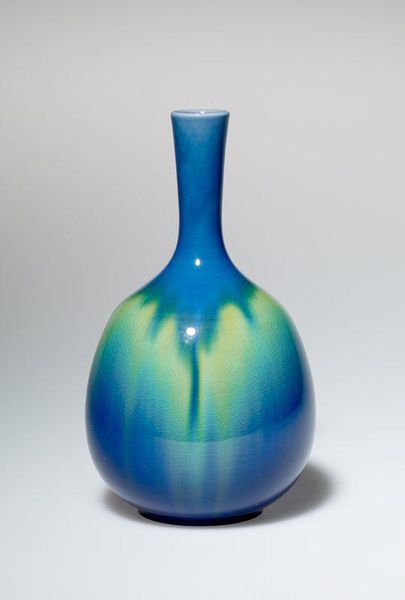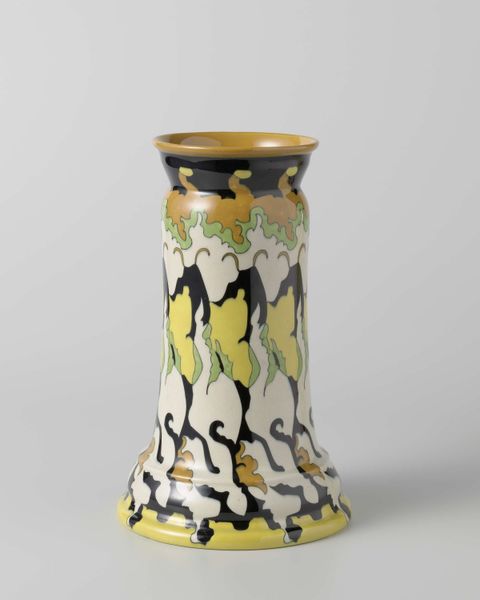
Shōsōin restorative style three-color string decorated vase c. late 1990s
0:00
0:00
ceramic, earthenware
#
asian-art
#
ceramic
#
earthenware
#
ceramic
#
abstraction
#
decorative-art
Dimensions: 6 3/4 x 9 x 8 5/8 in. (17.15 x 22.86 x 21.91 cm)
Copyright: No Known Copyright
Curator: Right now, we’re looking at an earthenware vase called "Shōdin restorative style three-color string decorated vase," created by Katō Takuo around the late 1990s. It’s part of the collection here at the Minneapolis Institute of Art. What are your first thoughts? Editor: It makes me think of thick cream melting down the sides of a cake, all wonky and organic. Not necessarily elegant, but very...alive? Curator: Absolutely! The ‘melting’ effect comes from a glazing technique Takuo adapted. The streaks, these vibrant greens and honey yellows, evoke the shōdin style. We could delve a bit more into the concept. What would you say about it? Editor: Right. Shōdin references Zen Buddhist temple architecture, specifically the small, intimate spaces intended for study and contemplation. The string decorations mimic the raked gravel gardens, so each vase kind of carries that world in miniature. It’s amazing that an object can speak of those things. Curator: I agree. Takuo saw pottery as a form of meditative restoration, he thought of ceramics as places of repair. And you can tell, that’s also true of the colors he chose! The light shades give some dynamism and joyfulness to an old model of glazing ceramics, making this ceramic a new expression of old artistry and traditions. Editor: The three-color glaze itself, Sansai, which is an old process used in Tang dynasty ceramics from China… the glaze adds another layer. This adds so many historical textures that makes this piece much more deep than it shows! Curator: So it's this beautiful dance between chaos and control, historical and contemporary... It’s almost a microcosm of how tradition evolves, holding onto its roots while branching out in new directions. Editor: Exactly. And even the "flaws", those drips and imperfections, seem deliberate, integral to its wabi-sabi spirit, don’t you think? That really emphasizes the importance of impermanence. Curator: Yes, a reminder that beauty resides in imperfection and change, in the flux, just like memories that can always be reshaped. And that makes Takuo's vase not only an art object but a contemplation in itself. Editor: Mmm, I see your point perfectly. Thanks to its imperfections, which give us so much beauty!
Comments
No comments
Be the first to comment and join the conversation on the ultimate creative platform.
